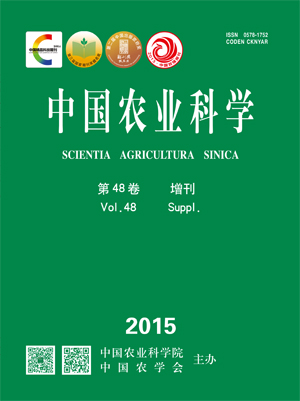-
Phylogenetic Analysis of Seven Different Geographical Populations of Wild Boar in China
- BAI Li-jing, LIU Bo, LI Lin, MU Yu-lian, LI Kui
-
Scientia Agricultura Sinica. 2015, 48(S):
58-66.
doi:10.3864/j.issn.0578-1752.2015.S.007
-
 Abstract
(
514 )
Abstract
(
514 )
 HTML
(
8 )
HTML
(
8 )
 PDF (535KB)
(
982
)
PDF (535KB)
(
982
)
 Save
Save
-
References |
Related Articles |
Metrics
【Objective】 The mitochondria DNA is the unique genetic material outside the nuclear within eukaryotic cells, having a relatively constant and different bioinformation from the nucleus DNA. The analysis of mitochondria DNA sequence could provide theoretical basis for researching the origin and evolution of the species. Therefore, based on the analysis of mitochondria DNA sequence mutation between different wild boars, we could study the genetic resources of wild boar from different geographical populations, and explain genetic relationships between different subspecies in China. 【Method】A total of 26 wild boars belonging to seven regions, including Inner Mongolia, Sichuan, Shanxi, Zhejiang, Jiangxi, Hunan and Fujian, were selected for DNA extraction using ear tissues and/or tail tissues based on Phenol - chloroform method. For each individual, according to Covaris System (Life Technologies), 3μg of DNA was sheared into DNA fragments of 200-800 bp. The DNA fragments were treated based on the Illumina DNA sample preparation protocol. Fragments were ending repaired, A-tailed, ligated to paired-end adaptors and PCR amplified with 500-bp inserts for library construction. Sequencing was performed to generate 125bp paired-end reads on the HiSeq2500 platform (Illumina). To compare the difference between wild boars in China and other countries, we downloaded the resequencing data of 12 wild boars, including six European wild boars, one Japanese wild boar, one Sumatra wild boar and four Chinese wild boars from NCBI website. We used the 12 resequencing data of wild boars and 26 resequencing data sequenced by ourselves to identify the mutation between the 38 wild boars. Based on the average of sequencing quality of paired-end reads, we filtered out the quality of paired-end reads less than the Q30. To identify the SNPs between 38 wild boars in whole mitochondria DNA sequence, the software BWA and samtools were used in this study. And then, we used minor allele frequency (MAF) more than 0.05 to filter SNP in wild boars population. Based on the reliable SNPs, we used maximum likelihood (ML) to construct the phylogenetic tree, principal component analysis (PCA) and nucleotide diversity analysis (π) in 38 wild boars. 【Result】A total of 226 SNP (0.014 SNPs/bp) were identified in 38 wild boars in whole genome sequence of mitochondria DNA, including 33 SNPs (0.028 SNPs/bp) in D-loop region. Based on different geographical populations, the 38 wild boars could be divided into nine groups, including Sumatra, Europe, Japan, Shanxi, Sichuan, Hunan, Jiangxi, Zhejiang and Inner Mongolia. For the analysis of GC content in whole genome sequence of mitochondria DNA in each group, the GC contents were not much changed, 34.7% for A, 26.2% for C, 13.3% for G and 25.8% for T, respectively. For the D-loop region, compared to whole genome sequence of mitochondria DNA , A content reduced 1% and G content raised 1%. The analysis of phylogenetic tree and PCA show that there was significantly divided into two groups between European group and Asian group. It indicates that the two groups were independent evolution. On the other hand, seven different geographical populations in China could be divided into three subspecies (Mongolian, Sichuan-Shaanxi, and South China wild boar). The results of nucleotide diversity analysis showed that the genetic distance were smaller (average π is 0.0022; range from 0.00024 to 0.0037) amongst the wild boars in China. However, there was large nucleotide diversity (average is 0.0049; range from 0.0044 to 0.0052) between European group and Chinese group. Sumatra and Japan groups were average 0.0025 nucleotide diversity compared to Chinese group. It indicates that comparing to Sumatra and Japanese wild boars, the European ones have large nucleotide diversity with Chinese wild boars. 【Conclusion】 Although there were abundant polymorphism haploid type in Chinese wild boars, the risk of losing the genetic diversity were increasing, which suggested that the scientific planning and protection of germplasm resources should be strengthened.









